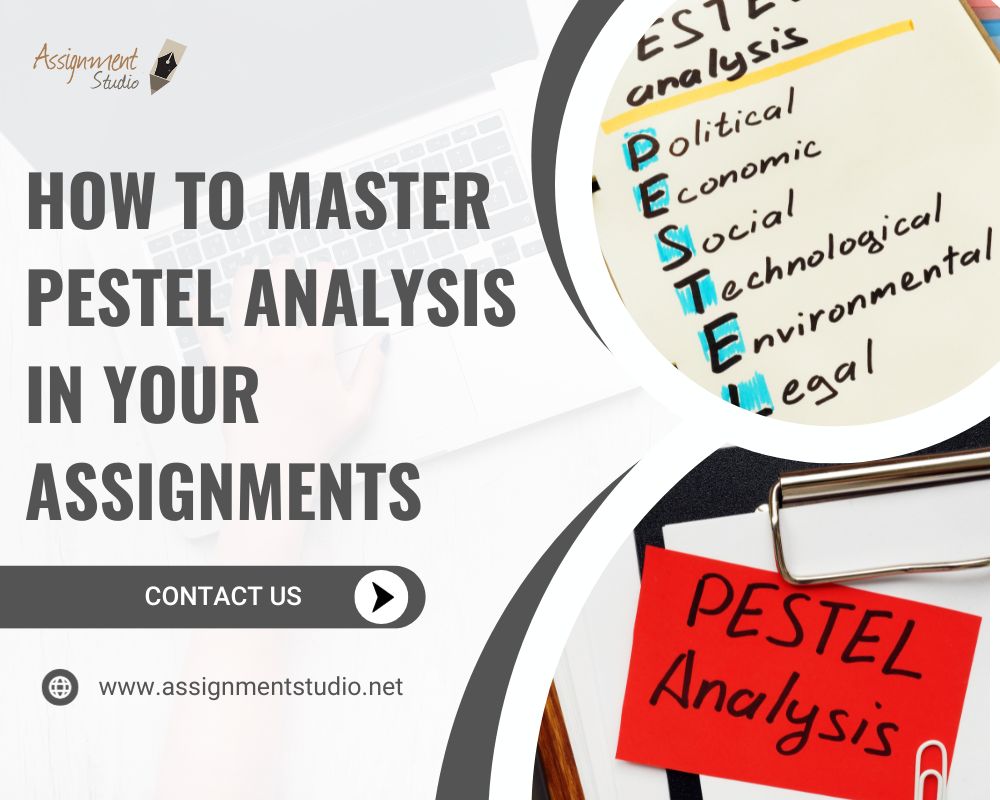
A PESTEL analysis is a strategic framework used to evaluate the business environment in which a firm operates. Originally known as a PEST analysis, it focused on Political, Economic, Social, and Technological factors. However, it later expanded to include Environmental and Legal factors as well. This analysis helps businesses understand the external factors that can impact their performance and make informed decisions accordingly.
Table of Contents
Elements of PESTEL Analysis
A PESTEL analysis examines various factors in the business environment. Let’s explore each element in detail:
Political Factors
Political factors assess how government policies and stability can impact an organization or industry. This includes factors such as political policies, trade regulations, fiscal policies, and taxation policies. Political instability can significantly affect a country’s positive aspects, like high technological awareness.
Economic Factors
Economic factors directly influence the economy and, consequently, organizations’ profitability. These factors include interest rates, employment or unemployment rates, raw material costs, and foreign exchange rates. Understanding economic factors helps businesses plan strategically based on inflation rates and buying trends.
Social Factors
Social factors focus on the social environment and emerging trends. Marketers analyze changing demographics, education levels, cultural trends, attitude changes, and lifestyle shifts to understand consumer needs and wants in a social setting. Adapting to social factors helps businesses stay relevant and meet customer expectations.
Technological Factors
Technological factors consider the rate of technological innovation and development that can impact a market or industry. This includes advances in technology, developments in AI, automation, research and development. It is essential to consider not only digital technology but also new methods of distribution, manufacturing, and logistics.
Environmental Factors
Environmental factors are influenced by the surrounding environment and the impact of ecological aspects. In recent years, Corporate Social Responsibility (CSR) and sustainability have gained importance in business practices. Organizations must consider factors such as climate change, government environmental policies, carbon footprint, waste disposal, and sustainability practices.
Legal Factors
Legal factors require organizations to understand the legal framework in which they operate. They must comply with legislation and be aware of any changes that may impact their operations. This includes employment legislation, consumer law, health and safety regulations, and international trade regulations.
How to Perform a PESTLE Analysis?
Performing a PESTLE analysis involves a systematic planning process. Here are five steps to conduct a PESTLE analysis effectively:
1. Prepare for Your Analysis
Before starting the analysis, establish the groundwork for accuracy and focus. Create a founding document that outlines the purpose, scope, goals, and initiatives of the analysis. Identify the key people involved and determine where and when to gather information. Present this plan to the team members and stakeholders to ensure alignment and obtain feedback.
2. Collect Data for Your Analysis
Gather the necessary information to fill out your PESTLE diagram. This may require primary research and consultation with industry experts. Focus on specific areas at a time and address them sequentially using the PESTLE acronym. This approach ensures focused efforts and easier progress tracking.
3. Complete a PESTLE Diagram
Organize the collected information into a PESTLE diagram to gain a clear understanding of the external environmental influences. Divide the factors into appropriate sections for easy comprehension. For example, social factors can be divided into subsections like consumer behavior, cultural norms, and work-related matters.
4. Interpret and Evaluate Your Results
Interpret the macroenvironmental factors identified in your PESTLE analysis and evaluate their impact on your organization. Prioritize the factors based on their importance and potential impact. Use tools like a risk matrix to assess the probability of occurrence and devise strategies to address them. Consider incorporating data from other strategic frameworks to gain a broader perspective.
5. Develop an Action Plan
Use the insights from your PESTLE analysis and other strategic analyses to develop an action plan. This plan should address the risks, threats, and opportunities identified. For example, if rising logistical costs pose a challenge, consider insourcing key parts of the logistics chain or revising the organization’s pricing strategy. Implement the action plan and monitor its effectiveness.
By following these steps, businesses can gain valuable insights into their external environment and make informed decisions to drive success.
Conclusion
A PESTLE analysis is a valuable tool for businesses to evaluate the external factors that can impact their operations. By considering the political, economic, social, technological, environmental, and legal aspects, organizations can develop strategies to navigate challenges and capitalize on opportunities.
If you are still confused about how to conduct a PESTLE analysis then get in touch with Assignment Studio PESTLE Analysis Australia Help and they will help you with it.







